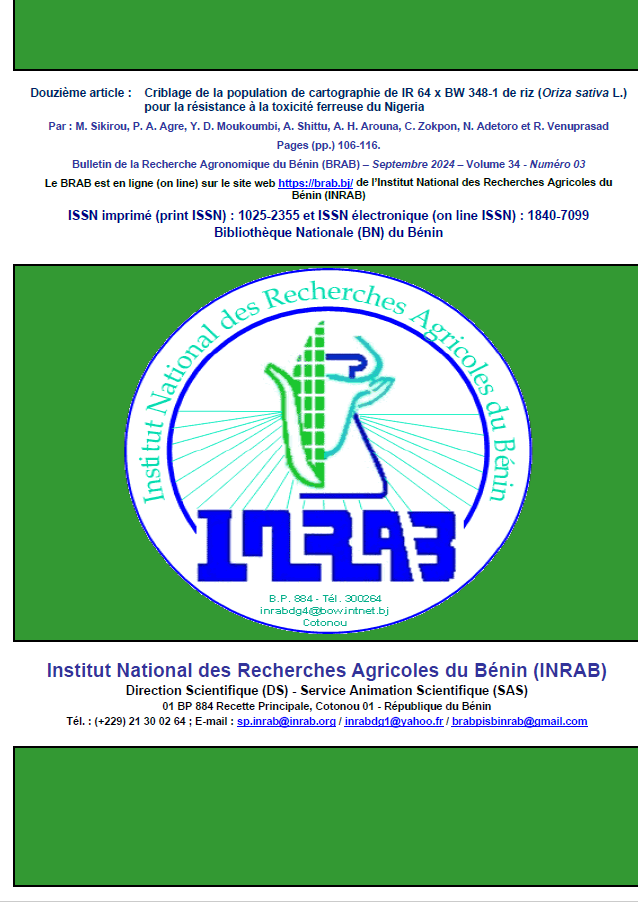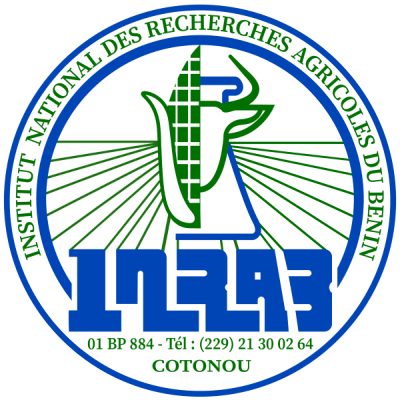Screening of mapping population of IR 64 x BW 348-1 for rice (Oriza sativa L.) resistance to iron toxicity in Nigeria
DOI:
https://doi.org/10.62344/brab.v34i03.224Keywords:
Oryza sativa, mapping population, plant breeding, Iron toxicity, FAI-BLUP, MGIDIAbstract
Iron toxicity is a nutritional disorder due to excessive absorption of Fe2+ by the rice plant and causing yield losses ranging from 10 to 100% depending on the season and the genotype. This study was conducted to identify genes of resistance to iron toxicity in rice (Oryza sativa) mapping population. A population of 342 genotypes was developed through a bi-parental crossing between IR 64 and BW 348-1 and was screened during two consecutive years in two agro-ecologies in Nigeria using alpha lattice design with two replications. Progenies and parents were phenotyped using five quantitative and one qualitative traits. Significant (p < 0.05) and highly significant (p < 0,001) negative genetic correlation was observed between leaf bronzing score at 63 days after sowing and the quantitative traits measured in this study while a positive correlation was recorded between the panicle length, plant height and the grain yield. A range of heritability (H2) was recorded for the traits where high heritability (0.60) was reported for the plant height and low heritability (0.12) with panicle number. Best Linear Unbiased Predictor (BLUP) was used to predict the total genetic merit for each genotype and the FAI-BLUP index was generated. Using the FAI-BLUP and MGIDI, 50 genotypes including IRBW-101, IRBW-156 and IRBW-35 are identified as high-ranking ideotypes and can be used as progenitors for rapid gene introgression.

Published
Issue
Section
License
Copyright (c) 2024 Bulletin de la Recherche Agronomique du Bénin

This work is licensed under a Creative Commons Attribution-ShareAlike 4.0 International License.
Les articles publiés par le Bulletin de la Recherche Agronomique du Bénin sont en libre accès. Ils sont gratuits pour tout le monde, immédiatement téléchargeables dès la publication et distribués sous la licence CC BY-NC-ND (https://creativecommons.org/licenses/by-nc-nd/4.0/).







